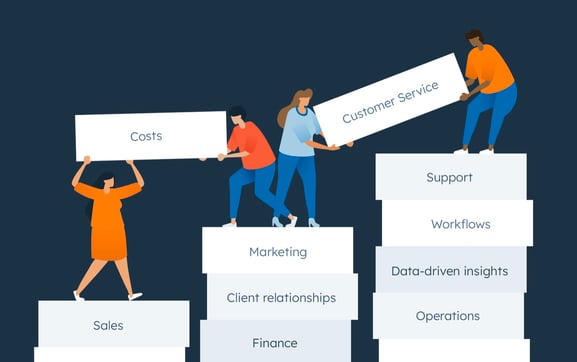
An effective website design should serve its purpose by conveying information and engaging visitors at the same time. Many factors contribute to a good website: stability, color, text, images, simplicity, and functionality. However, there are certain guiding principles that differentiate a great website from any other website. So, when you are going to create a website, a good web design can make it even better if the fundamental guiding principles are followed. This article illustrates the same. So, if you want to know these principles, keep reading.
1. Purpose of the website
Your website should match the needs of your customers. A simple and clear goal on every page is to help your customers be interested in the products you offer. What’s the reason for your internet site? Do you provide reliable statistics with How to Guide? Are you an entertainment web page like a sports event, or are you promoting your product to your customers? A website can serve many unique purposes, but there are some fundamental aspects common to all websites.
- Professional explanation
- Build your reputation
- Lead generation
- Sales and after-sales service
2. Navigation
Navigation is a navigation system used by websites where visitors interact and find what they are looking for. Site navigation is the key to retaining visitors. If navigating your site is confusing, your visitors will give up and look for what they need elsewhere. It is very important that navigation is simple, intuitive, and consistent across all pages.
3. F-based pattern
The F-based model is the most common way to digitize text on a website. Eye tracking studies show that most of what people see is at the top and left of the screen. The F-shaped layout mimics natural Western reading (left-to-right and top-to-bottom). A well-designed website works with readers’ natural browsing patterns.
4. Visual Hierarchy
The rule of thumb is to rank them in order of importance. This is achieved through size, color, image, contrast, typography, margins, texture, and style. One of the most important tasks of the visual hierarchy is creating key points. This tells visitors where the most important information is located.
5. Use a grid-based layout
Grids help you organize your layout and organize your content. A tool to help you edit and keep your page content clean. The grid-based design organizes your content into a neat grid, with columns and sections stacked appropriately, and gives structure to a website that is not only pleasing to the eye but also beautiful.
6. Loading time
Waiting for the site to load can result in a loss of visitors. Nearly half of web visitors can expect a site to load in less than two seconds and leave a site that doesn’t load in less than three seconds. Optimizing image size will help speed up your site’s loading.
7. Mobile Friendliness
Most people use their phones or other devices to browse the web. It is important to consider creating your website in a responsive design where your website can adapt to different screens.
Simplicity
Ease of use is the best way to measure the user experience and usability of your website. This is how simplicity is achieved by design.
a) Colour
Color can send a message and trigger an emotional response. Finding a color palette that matches your brand can influence how customers perceive your brand. Keep your color options under 5. Complementary colors work well. A good color combination increases customer engagement and makes you feel good.
b) Text
Text plays an important role in your site. It attracts attention and serves to visually define the brand’s voice. Alphabets should be read and sites should only use three different characters.
c) Videos
An image is any visual material used in communication. This includes all kinds of photos, illustrations, videos, and graphics. All images should convey and express the spirit of the company and serve to express the identity of the company. Most of what we eat on our website is visual, and using high-quality images to create professionalism and trust with our visitors is key to making it stand out.
Conclusion
Here is hoping that you have understood the 7 important principles of web design. If you have any concerns, or queries with this article, please share the same with us in the comments section below.





More Stories
Top 9 Advantages of Partnering with a Modern IT Services & Content Solutions Provider
Unlocking Growth: The Power of a Revops agency
How Startups Can Leverage a Research Marketplace for Rapid Growth